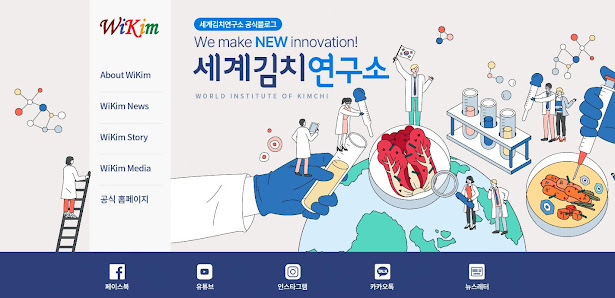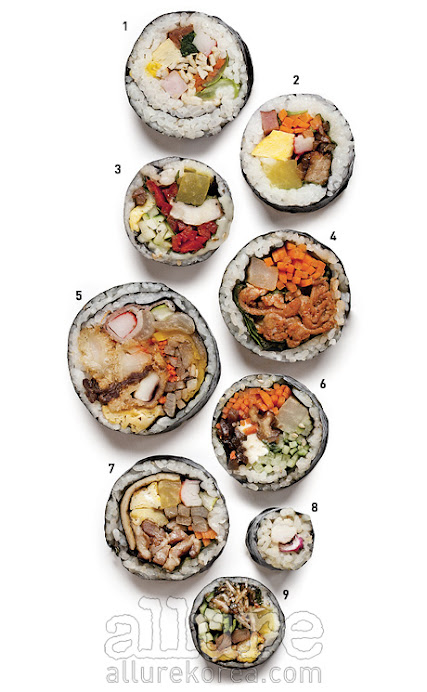[Kimchi Trend] Did you make kimchi at that restaurant? Winter kimchi season! Superfood Kimchi
hello. This is Toble++.
November Autumn deepens, and winter is coming. I have to make kimchi before it gets colder, right?!😁🤗🌶🍂
Just as the history of the emergence of Korean kimchi is unclear, it is also unknown when and by whom the practice of making kimchi began. However, since the Joseon Dynasty, there has been a culture of villagers helping each other with their work, called 'poomasi', and it is believed that making kimchi together during the process may have led to today's kimchi culture. ‘Kimchi season’ Generally, the best time to make kimchi is when the average daily temperature remains below 4℃ and the minimum temperature remains below 0℃. The best time to make kimchi is from late November to early December.
Just as the history of the emergence of Korean kimchi is unclear, it is also unknown when and by whom the practice of making kimchi began. However, since the Joseon Dynasty, there has been a culture of villagers helping each other with their work, called 'poomasi', and it is believed that making kimchi together during the process may have led to today's kimchi culture. ‘Kimchi season’ Generally, the best time to make kimchi is when the average daily temperature remains below 4℃ and the minimum temperature remains below 0℃. The best time to make kimchi is from late November to early December.
‘Kimchi’
Kimchi is a traditional Korean fermented food and a type of cooking style. Vegetables are pickled in salt water and fermented to increase their shelf life and seasoned with various seasonings. The unique feature is that the vegetables that have already been pickled are re-seasoned. In terms of ingredients used, most of them are possible except for a few vegetables. Additionally, if it can be stored sealed at low temperatures, it is a long-term food that can be stored for several years.
Additionally, there are many different types of kimchi, and there are many variations, starting with the most popular cabbage kimchi. Each region has kimchi that uses recipes and ingredients that cannot be found in other regions, so it also has its own identity as a local food.
 |
| Kimchi ranked first in superfood of 2023ㅣSource: Clipart Korea |
*Source_Cho Soo-wan, Hidoc health and medical reporter
 |
| Source_World Kimchi Research Institute official blog |
Kimchi and kimjang culture are considered to be as important as Hangu and Taegeukgi in that they represent the unique culinary identity of Koreans. This ‘kimchi culture’ goes beyond the simple act of making kimchi together, and the value of the community spirit of making kimchi together and sharing it with neighbors has been recognized.
The reason why kimjang, not kimchi, was registered by UNESCO is that it was developed not as a culture to eat fresh food for a long time, but to eat vegetables available in winter for a long time, and to take into account the characteristics of the Korean season, which requires surviving harsh winters, and as a specific object called kimchi. This is because it is established within Korea's unique culture based on an understanding of Korea's natural environment.
The World Kimchi Research Institute is a research institute under the Ministry of Science and ICT that conducts comprehensive research and development in kimchi-related fields to lead national technological innovation and contribute to fostering and developing the domestic kimchi industry as a representative growth engine industry in the food industry. It is an established institution.
In order to cherish the unchanging value of kimchi, which has become a 'cultural icon' beyond 'food', the World Kimchi Research Institute strengthens the basic strength of small-scale kimchi industries by securing super-gap technology in fermentation science in the kimchi industry. We are conducting research to create the future value of kimchi.
- (Homepage-Korean) https://www.wikim.re.kr/
- (Homepage - English) https://www.wikim.re.kr/index.es?sid=a2
- (Blog) https://blog.naver.com/wikimpr
- (Facebook) https://www.facebook.com/wikim11/
- (Instagram) https://www.instagram.com/wikim86/
- (YouTube) https://www.youtube.com/@WiKimTV
November 22nd is Kimchi Day with the people! World Kimchi Research Institute holds 2023 WiKim Festival
*Source_World Kimchi Research Institute
The World Kimchi Research Institute (Director Jang Hae-chun), a government-funded research institute under the Ministry of Science and ICT, held the '2023 WIKIM FESTIVAL (2023 WIKIM FESTIVAL) in commemoration of the 4th Kimchi Day, the first legal anniversary of food, and the 10th anniversary of the listing of 'Kimjang Culture' as a UNESCO Intangible Cultural Heritage of Humanity. 'We Kim Festival' was held at the Seoul aT Center on Kimchi Day on November 22nd.
The 'We Kim Festival' is hosted and hosted by the World Institute of Kimchi and sponsored by the Ministry of Science and ICT, the Ministry of Agriculture, Food and Rural Affairs, and the National Research Council of Science and Technology. It hosts online and offline live broadcasts such as the Kimchi Science and Technology Innovation Conference and the Kimchi Science Talk Concert and promotes technological exchange in the kimchi industry. It went ahead. (https://wikimfestival.co.kr/)
*Source_World Kimchi Research Institute
The World Kimchi Research Institute (Director Jang Hae-chun) under the Ministry of Science and ICT is recognized as Korea's first 'Certified Biological Resources Bank' in the field of Kimchi lactic acid bacteria by KOLAS (Korea Laboratory Accreditation Scheme) of the National Agency for Technology and Standards and the world's first in the low-temperature kimchi lactic acid bacteria test method. It was announced on the 20th that all of them were recognized as 'accredited testing institutions'.
The KOLAS accredited biological resource bank accreditation system evaluates the capabilities, service quality, and reliability of domestic biological resource banks in accordance with the international standard for biological resource bank operation (ISO 20387) and recognizes institutions that meet the essential requirements as accredited institutions. It is a system.
In order to create the future value of kimchi, the World Kimchi Research Institute has established and is operating a ‘Kimchi Resource Bank’ to isolate lactic acid bacteria from kimchi collected from all over the country and utilize it as a useful resource.
The World Kimchi Research Institute has been designated as a KOLAS certified testing laboratory since 2017 to secure quality competitiveness and support exports in the kimchi industry and has been providing test results services in the food and microbiological fields.
With this newly recognized new testing method, it has become possible to collect new kimchi lactic acid bacteria that have not been discovered so far and manage them as Korea's unique resource. These kimchi lactic acid bacteria resources can be used in the future not only in the kimchi industry but also in various industries and research sites such as food, medicine, health, and marine.
Hae-chun Jang, Director of the World Kimchi Research Institute, said, “This newly recognized test method specialized for low-temperature kimchi lactic acid bacteria has made it possible to discover Korea’s unique and unrivaled kimchi lactic acid bacteria, and furthermore, it has been possible to store low-temperature-growing lactic acid bacteria isolated using this test method. “We have been recognized as an institution that meets international standards for all management systems in place, securing international public trust in our research results in the field of kimchi lactic acid bacteria,” he said. “In the future, the research institute will increase the value and trust of kimchi and kimchi lactic acid bacteria as a national resource and become a leader in the kimchi origin country.” “We will continue R&D to raise our status,” he said.
Meanwhile, the World Institute of Kimchi Research Institute's Kimchi Resource Bank holds a total of 1,257 strains of 60 types of 'real resources', including functional lactic acid bacteria and kimchi starters discovered through R&D achievements, as well as lactic acid bacteria with low-temperature growth ability, and genome information of lactic acid bacteria and kimchi raw and subsidiary materials and You can also check 'information resources' such as hazard factors, and also receive consultation on distribution, receipt and deposit of kimchi lactic acid bacteria, and technology transfer.





댓글
댓글 쓰기